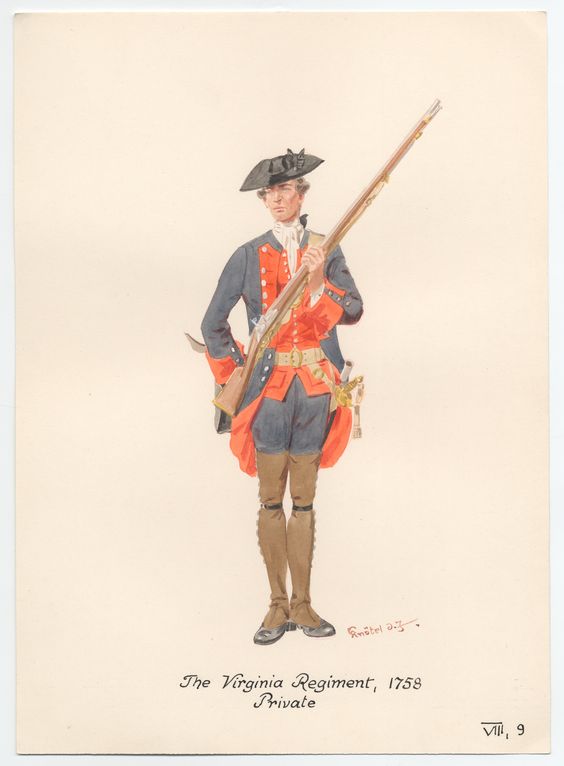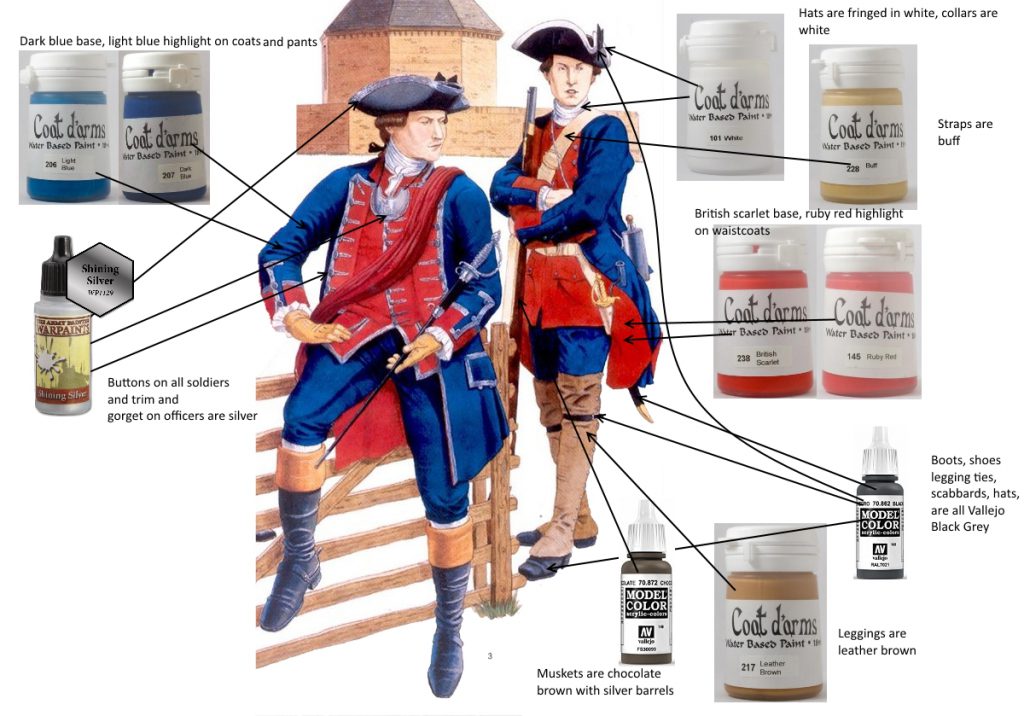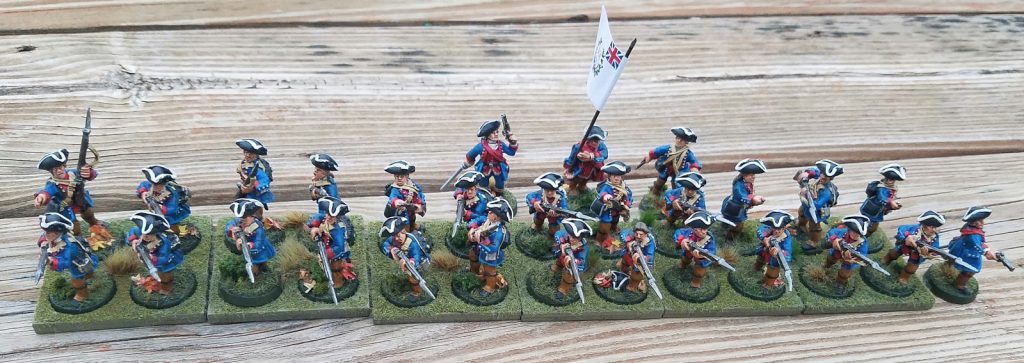

In terms of Sharp Practice, they’re the main part of a ‘settler defense’ force. The author put together some basic forces for each period and they’re the ‘regulars’ so to speak in a force defending settlements from French and Indian attacks. We’ve used these forces as we’ve started playing the game but they’re not the end-all be-all – you can add to them since TFL also included a points system.
I’ve also purchased a ton of 60th Foot from Galloping Major so I’d like to figure out a way to include two groups of those in my British list. The French lists are all 15-20 points more, so I don’t think that should be a problem.
You can see how bad these guys are – hard to get crashing volleys and step out, lack of special rules, conscripts and volunteers. They do have the ability to stay in formation always, though. Hearth and Home basically makes them a bit better if the scenario takes place in their own state. If they are not in their own state then they are Weedy Coves, which makes them worse at fisticuffs.
The Virginia Regiment was the first American professional force. They had uniforms and drilled and recruited regularly. It seems that most of the men were rather poor, as there was a buyout of the draft at ten pounds and you could also provide a substitute. There were also noted to be some men of native American or African descent.


Painting the Virginia Regiment
I decided to try new paints, going from GW/PP/Vallejo to mostly Coat D’Arms / Vallejo and some Stone Mountain paints. I wanted to change it up and use some other paints and explore new colors. I also wanted to get deeper into varying shades of the military colors I’d need for my planned French and Indian War, Rev War, and Samurai models.

Here you can see a little chart I made up showing the colors corresponding to an Osprey panel. I actually think I’ll be doing this for every force I paint up in the future so I can remember.
I started by painting the base on the coats Dark Blue, then highlighted a bit with Light Blue. Then I painted the waistcoats and facings British Scarlet and highlighted with Ruby Red. This a pretty large undertaking as most of the model was blue and red.
I painted their faces and hands using Stone Mountain Miniatures Caucasian flesh.

Then I painted the black parts with Black Grey by Vallejo. I really love this color and use it all the time for anything black. It is a little lighter than black so it takes washes and is easier to highlight, in my opinion. I painted their hats, boots, shoes, legging ties, etc with Black Grey. Their cartridge boxes were also Black Grey but they don’t show on the picture. I highlighted the cartridge box with a lighter gray.
Then I went through and painted leggings Leather Brown. The top of the officers boots were also painted this color. I believe they also had white leggings, but I think they may only have been used on parade.
The straps for all the bags and pouches were painted Buff, and the hat tips and collars were painted White. Finally, I painted canteens, officer trim, and buttons using Army Painter Shining Silver.

The last step was to use Army Painter soft tone liberally to wash the spots of the model that needed shadow. I don’t tend to paint detail on faces, so a wash settles in the eyes and mouth perfectly.

I went through and finished everything, varnished, based, etc. All in all the project took me about two months from January to now, to paint 24 infantry, two officers, a drummer, and a standard bearer. All models are from Galloping Major.
In Sharp Practice, that’ll make two different leaders and support selections in the drummer and standard bearer. It’ll also be three different groups of eight men, which will make a great base for my British French and Indian force.

Thanks for reading – stay tuned for more Force Focus articles in Goonhammer Historicals!


